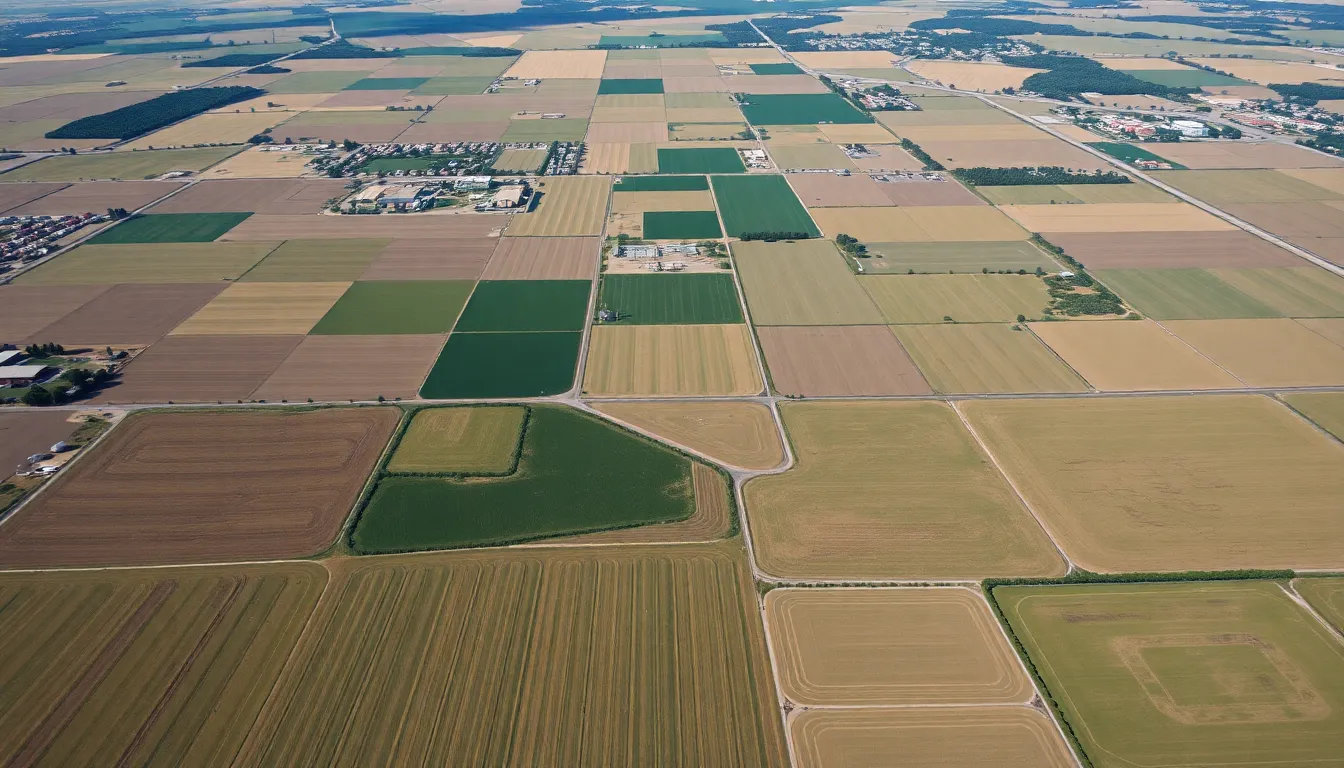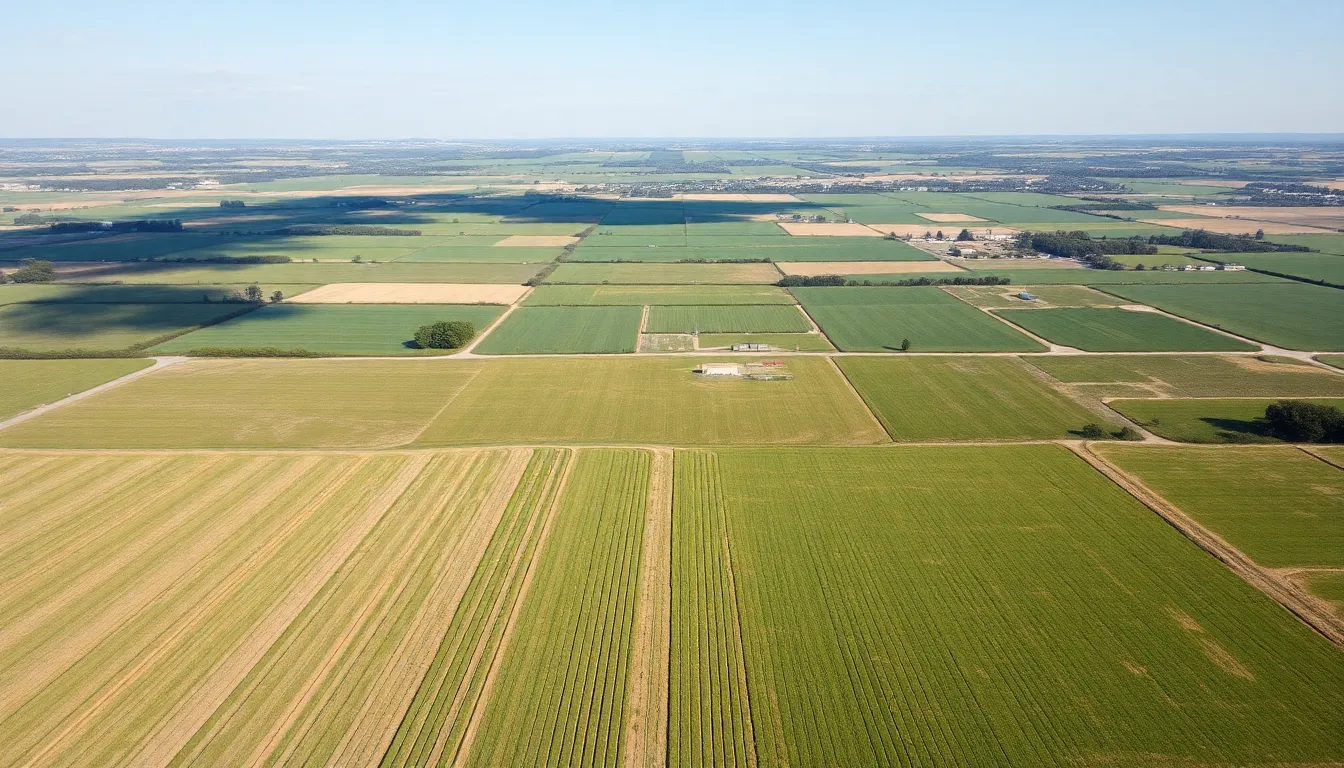Ever found yourself pondering how many acres fit into a mile? No? Just him? Well, he’s not alone! Understanding this measurement can be surprisingly useful, whether you’re planning a backyard garden or dreaming of a sprawling farm.
Table of Contents
ToggleUnderstanding Measurement Units
Measurement units provide essential context for various calculations. They simplify the understanding of land area, distance, and volume. One acre represents a unit of area equal to 43,560 square feet. Conversely, a mile is a unit of length equivalent to 5,280 feet.
Conversions between these units become necessary for many applications. For example, landowners often need to assess property dimensions. A square mile amounts to 640 acres. Thus, establishing a clear link between acres and miles becomes crucial for effective land management.
Understanding these measurements might aid in landscaping projects or agricultural planning. Specific tasks require accurate conversions. Knowledge of these units enhances clarity in discussions about land use.
To visualize the conversion further, here’s a concise table outlining the key figures:
| Measurement | Equivalent |
|---|---|
| 1 Acre | 43,560 Square Feet |
| 1 Square Mile | 640 Acres |
| 1 Mile | 5,280 Feet |
Equipped with this information, individuals can confidently navigate land measurement discussions. Mastery of these units proves beneficial across various domains, ensuring decisions are well-informed. Familiarity with measurement units elevates the planning process in gardening, farming, and real estate.
Converting Miles to Acres

Understanding how to convert miles to acres aids in various land-related calculations. Using the right formula simplifies the process significantly.
Formula for Conversion
One mile measures 5,280 feet, while an acre represents 43,560 square feet. To find how many acres are in one mile, divide the total square feet in a mile by the square feet in an acre. This results in the calculation of 5,280 feet x 5,280 feet, which equates to 27,878,400 square feet in a square mile. Dividing that figure by the 43,560 square feet in an acre confirms there are 640 acres in a square mile. Thus, this straightforward formula showcases the relationship between miles and acres effectively.
Practical Applications of Conversion
This conversion serves multiple purposes for landowners and planners. In agriculture, understanding these measurements helps with determining land sizes for crops or livestock. For real estate developers, these conversions assist in site planning and zoning regulations. Landscaping projects benefit from knowing how large an area covers in both miles and acres. Clarity in these measurements enhances decision-making, whether it’s for designing parks or assessing land value. Effective use of these calculations leads to better project outcomes and optimized land use.
Historical Context of Measurement
Measurement practices have evolved significantly over time. The acre originated in medieval England as a unit of area for land, representing the amount of land a team of oxen could plow in a day. In contrast, the mile has roots tracing back to ancient Roman civilization. The term “mile” comes from the Latin “mille passus,” meaning a thousand paces, establishing its use for measuring distances.
Units of measurement were essential for trade and land management in historical contexts. Various cultures adopted different systems, often leading to confusion. The standardization of measurements, particularly acres and miles, occurred gradually as nations sought reliability in commerce and agriculture. Such standardization facilitated clearer communication in land transactions.
Changes in land use prompted further advancements in measurement. The expansion of agriculture and urban development in the 19th and 20th centuries emphasized the need for accurate land measurements. Consequently, landowners and developers required consistent standards for planning. With the adoption of the Imperial system in the U.S., the acre and mile became widely recognized units, promoting uniformity in property assessments.
Despite historical origins, modern applications continue to reflect the significance of these measurements today. Knowing that one square mile equals 640 acres forms the foundation for various calculations. This connection allows landowners and planners to make precise decisions affecting agricultural practices, real estate developments, and landscaping projects. Understanding this historical context enriches current discussions on land use and management, enhancing landowners’ ability to interpret and utilize these measurements effectively.
Common Misconceptions
Many people believe that a mile and an acre are directly comparable in size, which isn’t the case. One mile represents a linear distance while an acre defines an area. This distinction often confuses landowners and planners.
Some individuals think “acre” and “square mile” are interchangeable. An acre equals 43,560 square feet, whereas a square mile measures 640 acres. Understanding these differences clarifies discussions about land size.
Another misconception involves measuring length and area using the same units. While a mile describes distance, an acre quantifies area. Emphasizing these separate dimensions ensures accurate assessments in landscaping and agricultural planning.
It may seem intuitive to convert miles to acres using simple calculations. However, one must first recognize that a mile isn’t an area measurement. An effective conversion involves knowing that one square mile equals 640 acres, enabling proper planning for land use.
Some think that simply multiplying acres by the distance in miles yields an area measurement. Successful conversions demand understanding square units instead. Miscalculating this aspect leads to confusion and erroneous project outcomes.
Landowners sometimes overlook the historical context of these measurements. Knowing the acre originated in medieval England and the mile from ancient Rome highlights their evolution in land management. This context enriches perceptions of land measurement and its significance today.
Not all recognize the importance of accurate measurements in real estate and agriculture. Precision enhances site planning for zoning, crop cultivation, or livestock grazing. Acknowledging these distinctions improves decision-making and fosters better land utilization.
Understanding the relationship between acres and miles is vital for anyone involved in land use or management. This knowledge not only aids in making informed decisions but also enhances clarity in discussions about property dimensions. By grasping these measurements and their historical context, landowners and planners can navigate agricultural and real estate challenges more effectively.
Recognizing the differences between linear distance and area ensures accurate assessments in various projects. Embracing these concepts can lead to optimized land use and improved project outcomes, ultimately benefiting those engaged in landscaping, farming, and real estate planning.








